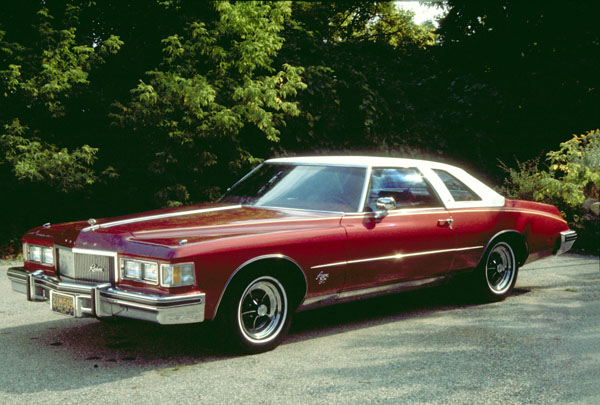
The Buick Riviera could be considered as America’s answer to the Bentley Continental. At the time of its introduction Ford’s Thunderbird was one of the best-selling cars and General Motors needed a response. General Motors design chief at the time told his staff that GM needed a car which was a cross between a Ferrari and a Rolls Royce. When it went into production the Riviera had all the chrome and accessories of its contemporaries but was blessed with some of the finest Detroit styling of the 1960s. In a word it had class. This two-door coupe had an extremely clean profile which was quite different from its contemporaries of the period with all their fins and chrome.
Under the bonnet was the expected V8 engine, initially only with 6.5-litre capacity, but later this grew to 7.00-litre which gave a power output of 272kW. Although it had only the obligatory two-speed automatic gearbox it was capable of 209km/h. Tests showed it could go from 0-96km/h in a quite fast 7.7 seconds. Eventually Buick sold the tooling for this engine to Rover, who used it to great success in early Range Rovers. Like many large American cars of the 60s and later the brakes were never really satisfactory – fading at high speed – and handling was rather conventional.
The grille was inspired by the Ferrari 250GT and the bodyline was reminiscent of the angular Rolls-Royce Silver Shadow. Inside the Riviera driver wanted for nothing, with electric windows, power steering and a dashboard which looked extremely tasteful by Detroit standards. The substantial boot could fit two sets of golf clubs with ease and had a remote-controlled boot lid which was rather unusual for that time. The rear view of the car showed it to be a study in simplicity with an unembellished boot and delicate rear lights.
Buick planned only to make 40,000 of these cars each year so as to maintain a measure of exclusivity and during the life of the car from 1963-1965 only a total of 112,244 cars were produced. After 1965 the car lost much of its unique personality as future models shared many of the parts and panels with the Cadillac Eldorado.